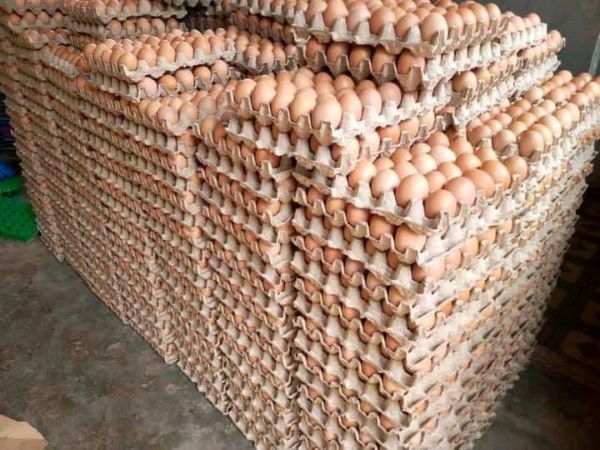By Zablon Oyugi
Uganda has assured Kenya that it will continue supplying the neighbouring country with cheaper eggs in the coming weeks following reduced cost of production of the most-sought-after chicken produce.
The cost of maize which is the major ingredient in making chicken feeds had gone up in Uganda causing the price of a tray of eggs to rise from Ksh205 to Ksh308 making it difficult for Kenyan traders to import the commodity as they are yet to incur transport among other costs.
“The price of maize which had gone up has now dropped by 60% meaning the cost of production will significantly reduce in the coming days,” said Frank Tumwebaze, Uganda’s Minister for Agriculture.
Today, the price of eggs in Kenya has gone up from KSh380 a tray it was in December last year to Ksh450 a tray in the local shops and Ksh520 in the supermarkets.
Over the years Kenya has been relying on imported eggs from Uganda to stabilise the price of the commodity locally given that the ones produced in Kenya are very expensive owing to the high production costs.
The ever-high cost of production in Kenya has always attributed to the high cost of eggs in the local markets as a good number of farmers cut on output, according to the sector stakeholders.

Trade talks
Uganda has been embroiled in a trade war with Kenya in some commodities such as milk since 2020. However, according to Tumwebaze, the two countries are at an advanced stage of trade talks that would eliminate non-tariff trade barriers in agriculture commodities.
“I am seeing a possibility of a trade agreement in the near future that will allow increased trade, especially in agriculture products, between our countries in areas where we have disputes,” he said.
Duty-free taxation
To aid the importation of maize, the major raw material in making animal feeds, Kenya has imposed a duty-free taxation on yellow maize to allow millers to import the raw material.
This will see the cost of animal feeds reduce significantly in the next few months as the duty-free window runs between now and December allowing millers and traders to ship in the commodity for processing of the feeds with the view to lowering the cost.
Cost of poultry feeds in Uganda and Kenya
In Uganda the cost of chicken feeds is lower than in Kenya. “Our government has also subsidised the cost of poultry drugs and vaccine to encourage more small-scale farmers to engage in poultry production,” said John Mugisha, a trader in Uganda who has been in the eggs business for the last six years.
“Remains from maize and cassavas are easily available due to high production of the two crops compared to Kenya. This is used to feed chicks. This means one can make feeds at the farm level and does not necessarily need to go for the processed product,” he says.
In Kenya, The price of a 70-kilogramme bag of layers marsh is selling at Sh4,500 from Sh3,800 in April last year, chick mash is going for Sh4,940 from Sh4,200 while dairy meal is selling at Sh2,850 from Sh2,500.









[…] Source link […]
[…] Read more here […]
[…] Read more here […]
Comments are closed.